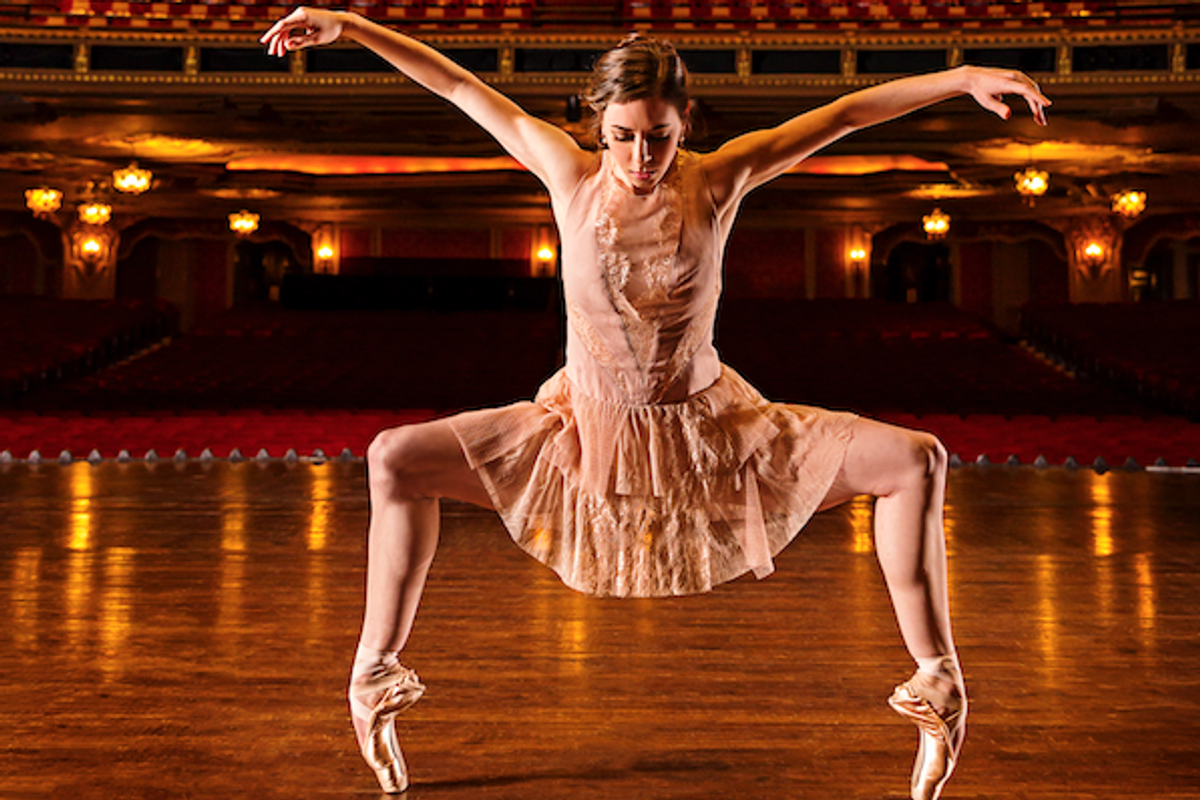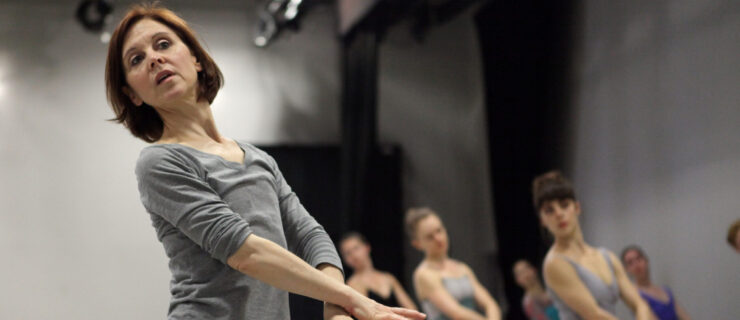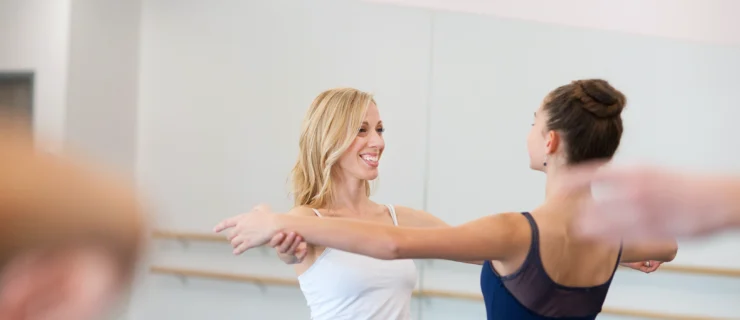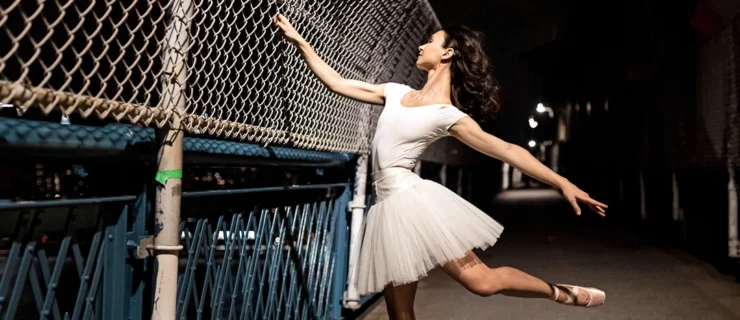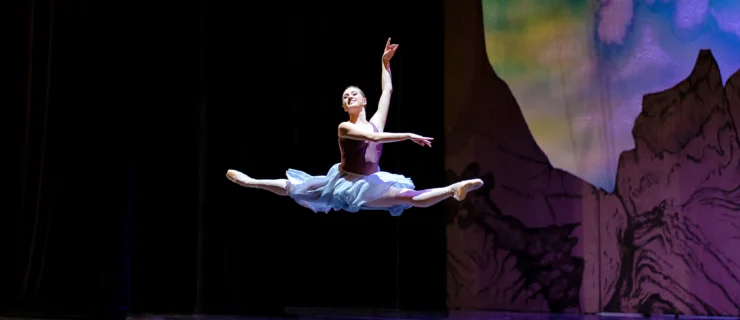More Than a Number: How Auditions Helped One BalletMet Dancer Define Her Artistry
I felt shattered. Cut from the audition at barre. I was 24 years old and had been dancing professionally for eight years already. I’d been very fortunate in my career so far, and although I was no stranger to rejections, this was a first. I thought: I must not be a good dancer anymore. I’m a has-been. Maybe it’s time to rethink my career path.
As I waited for my friend, who came to the audition with me and was asked to stay, I realized which sort of dancers were let go early and which ones were kept. Everyone around me packing up their things was a seasoned dancer. A couple I knew from other companies, all beautiful and capable. The ones that were kept were young and aspiring; they had lots of potential, but no professional experience.
It wasn’t that I was a bad dancer. I just wasn’t what they were looking for.
Audition season is a time of year, for dancers aspiring and seasoned alike, that is full of possibilities: realized dreams or crushed ones, exciting new beginnings and bittersweet ends. A time of year that can be exhausting emotionally and financially. What can we do to be successful in getting our dream job, the one that fulfills our passion? Well, I don’t have all the answers, but, needless to say, I’ve auditioned a lot and picked up a few pointers along the way.
Don’t Take Rejection Personally
That unfortunate day I was cut from the audition at barre was because I didn’t fit. They were most likely looking for dancers who could fill a second-company position, who could grow into the artistic vision of the company. It’s easy to take rejection personally, but we have to remember that there are so many factors that are beyond our control. All ballet companies have an artistic side and a business side, something we dancers tend to forget since we are so deeply immersed in the former. Artistic directors have the hard job of making their vision come to life while also making a profit. Each audition season, they must choose dancers who not only fit their vision, but who also can fill the positions they have available.
Although it is very discouraging to be told “no,” it could just mean it is not the right time. One thing I’ve learned is that a rejection from a particular company one year does not necessarily mean you’ll get one the next. I sent my audition materials (resumé, video and pictures) to BalletMet for the 2014–15 season. Although artistic director Edwaard Liang was interested in working with me, he did not have a contract available to offer me then. The next audition season I reached out to BalletMet again and was hired. Put yourself out there confidently and without limitations, and you will eventually find your “yes.”
 Powers with Andres Estevez in Balanchine’s “Serenade.” Photo by Jennifer Zmuda, Courtesy BalletMet.
Powers with Andres Estevez in Balanchine’s “Serenade.” Photo by Jennifer Zmuda, Courtesy BalletMet.
Make a Personal Connection
Although there are many factors we cannot control, there are things I do before auditions to be more prepared and hopefully successful. I’ve found that whether I’m going to a cattle call or asking for an audition in company class, it’s helpful to send my audition materials in advance. This helps make a personal connection so that you can be seen as you and not “Number 67.” The cover letter or introductory email should also be treated as part of your audition materials; it’s where you can explain who you are and why you want to be a part of that particular company. Maybe you took a class from one of their ballet mistresses, or your teacher has a former student in the company. Or perhaps you saw one of their performances and it really inspired you. Whatever has made you want to work there, let them know.
Project Confidence
The last story I’ll share is one that sheds light on what I believe is the most important part of auditioning: confidence. Confidence is very powerful. It was the reason I was hired to dance for La La La Human Steps. Even though I was coming from a very classical company, I went into the audition for the artistic director, Édouard Lock, with a fearless attitude. I had no experience dancing contemporary work and thought, Well, I have nothing to lose. It paid off. I didn’t doubt myself because I had no context of what I could and couldn’t do.
After I had been working with Édouard for a year or so, he told me he had been drawn to my strength during my audition. At the time, I thought he meant a physical and technical strength, but now I believe he meant an emotional one. Every company I’ve danced for has broken me down to my most basic self and molded me into their vision. In this process, I’ve needed to be malleable while also remaining true to myself. I’ve needed inner strength to be more capable and versatile than I thought I could be, instead of stubbornly refusing to dance outside my conception of myself.
Whenever I experience self-doubt, I’m no longer free to be in the moment, nor to be the artist I am. And auditions are your time to let your artistry shine through. Directors want to see that, because live performance is what they are selling. While technique is a tool to help us send a message and tell a story, only an artist can deliver that message. Show who you are as an artist in an audition, because that’s something that’s unique to you, and no one else can fill that spot.
Grace-Anne Powers is a dancer with BalletMet.
